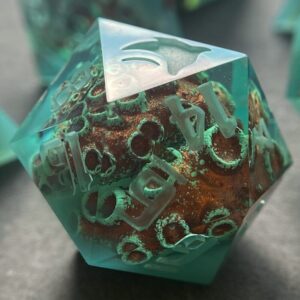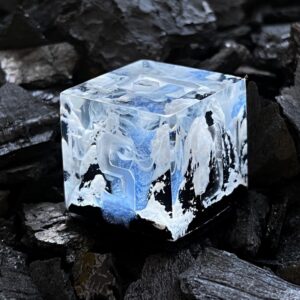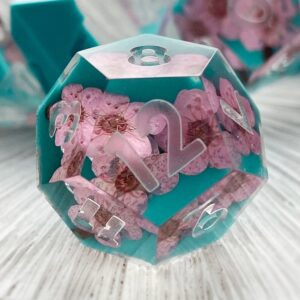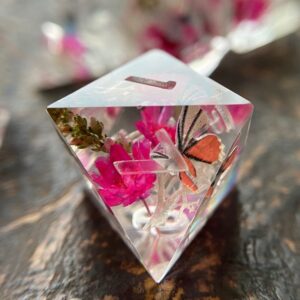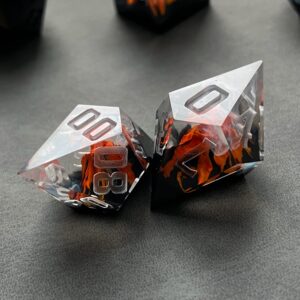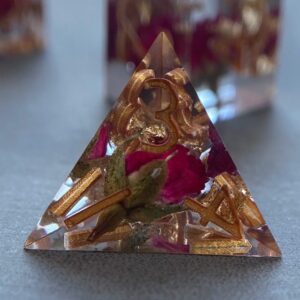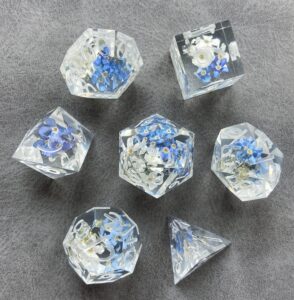Different Types of Dice. Questions Beginners Ask.
Rolling the dice— it’s the heartbeat of countless games, from the board games we grew up with to the intense battles of Dungeons & Dragons. But did you know that not all dice are created equal? There’s a whole family of dice out there, each with its own quirks and personalities. Let’s dive into the wonderful world of dice and unravel the mysteries of those oddly-shaped polygons that can dictate our victories and defeats.
There are some most popular questions from beginners:
Q: What Are the Different Kinds of Dice?
A: Dice come in more flavors than an ice cream parlor. You've got your six-sided classics, your mysterious ten-siders, and even some wild twenty-siders. Each one is like a character in a story, adding its unique twist to the game.
Q: What Are 20 Sided Dice Called?
A: Ah, the big kahunas of the dice world—the 20-sided dice. These bad boys are called icosahedrons. Try saying that five times fast after a few rounds of your favorite game. They're like the rock stars of the dice family, bringing a hefty dose of suspense to every roll. Perfect for those epic moments in Dungeons & Dragons when you're deciding the fate of your character with a single toss.
Q: What Is a 6 Sided Die Called?
A: The OGs of the dice family, the six-sided dice, are simply known as d6. These are your Monopoly dice, your Yahtzee partners in crime. They’re reliable, like that friend who always brings snacks to the party. But don't underestimate their simplicity—they hold the power to determine whether you pass "Go" and collect $200
Q: What Is a 12 Sided Dice Called?
A: Feeling a bit adventurous? Meet the d12, or as I like to call it, the "dozen-sider." It's like the middle child of dice—often overlooked but packs a punch when it gets its chance to shine. Roll it to determine the outcome of your character's daring escapades or the damage dealt by that mystical spell.
Q: What Is the Shape of the 8 Sided Dice Called?
A: Enter the octahedron, or as dice enthusiasts affectionately call it, the d8. It's like the dice version of a stop sign, commanding attention when you need to figure out how much damage your character's enchanted sword inflicts. Sharp corners and eight sides—this die means business.
Q: What Is a 10 Sided Dice Called?
A: The ten-sided dice, or d10, is like the Swiss Army knife of dice. It's versatile, serving various roles in different games. Whether you're calculating percentages, determining damage, or selecting a random item from a list, the d10 is your go-to tool.
Q: What Is a 4 Sided Dice Called?
A: Now, let's talk about the diva of the group—the d4. It's got the fewest sides, but boy, does it demand attention. Step on a d4, and you'll know what I mean. These tetrahedral mischief-makers are often used for low-damage weapons or for deciding the order in which your party members take their turns.
Q: What Is the Most Common Dice?
A: If six-sided dice are the classics, then they're the most common dice you'll encounter. From craps tables to family game nights, the d6 is a true crowd-pleaser. It’s the baseline, the foundation, the bread and butter of the dice universe.
Q: What Are the 7 Dice in D&D?
Q: How does the DND dice system work?
A: There's a whole family of dice in D&D. It's like a quirky dice family reunion, and each die has its own role in this epic saga.
- This pyramid-shaped troublemaker is all about low-level damage. When your wizard hurls a magic missile or your rogue stabs someone with a dagger, it’s the d4 that decides how much hurt they dish out.
- The humble cube. You’ve seen it a million times. Monopoly, Yahtzee, maybe even under your couch cushions. In D&D, it’s your go-to for basic stuff, like the damage from a short sword or a sneaky thief’s dagger.
Octahedron, if we wanna get all fancy. This one spices up the damage rolls a bit. When your paladin swings a battleaxe or your ranger takes a solid shot with a longbow, it’s the d8 that decides how much oomph they pack.
It’s got ten sides, hence the name. This one often teams up with its identical twin for percentage rolls. Think critical hits, wild magic surges, or just determining how much of a discount you get at the blacksmith’s fire sale.
The d12 is like the heavyweight champion of damage. When your barbarian goes berserk with a greataxe or your cleric smites evil with a mace, the d12 steps up to the plate.
The superstar, the head honcho, the grand poobah. This bad boy decides your fate. Roll high, and you’re acing that persuasion check; roll low, and you might just trip over your own shoelaces while trying to impress the tavern wench.
Its job is to team up with its sibling, the regular d10, to tackle percentage rolls. Want to know if your arrow hit that goblin? The d10 duo is on the case.
Q: Are there any odd sided dice?
A: yes, here they are:
100 Sided Dice: The Centennial Marvel
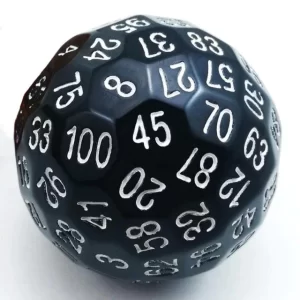
3 Sided Dice: The Pyramid Peculiarity
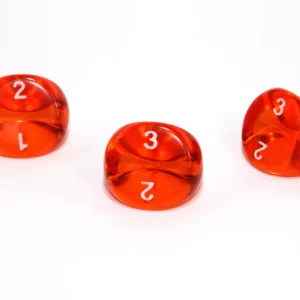
5 Sided Dice: The Pentagonal Maverick

7 Sided Dice: The Lucky Number Seven
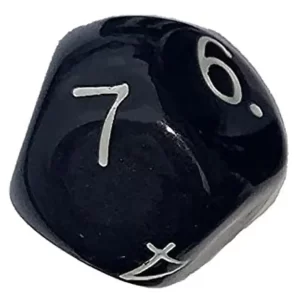
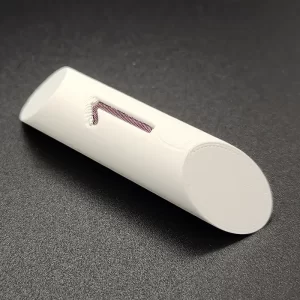
d1 Dice: The Lone Wolf
Brace yourselves for the anomaly – the d1. Wait, what? A one-sided die? Isn’t that just a coin? Well, yes, but this single-faced wonder exists for those moments when you want to roll the dice without any ambiguity. It’s like saying, “I’m leaving nothing to chance, and this is my final answer.” The d1 is the mic-drop of the dice world, making a statement with its solitary face.
Roll the dice!
- Shake Things Up: Don’t be afraid to give those dice a good shake. Channel your inner casino dealer and let ’em fly. The more spins, the more drama.
- Be Gentle with the d4: The d4 is notorious for being a bit temperamental. Treat it with care, and it won’t retaliate when you least expect it.
- Create Rituals: Develop your own pre-roll rituals. Whether it’s a lucky chant or a special way of holding the dice, make it yours. Just don’t get too superstitious; the dice have their own agenda.
- Embrace the Chaos: Sometimes, the best stories come from unexpected rolls. Embrace the chaos, and let the dice weave tales that surprise even you.
Dice are more than just random number generators. They’re storytellers, decision-makers, and sometimes, the architects of our triumphs or downfalls in the gaming world. So, the next time you’re gathered around a table, ready for adventure, take a moment to appreciate the dice in your hand. After all, they’re not just pieces of plastic or carved bits of metal—they’re your companions in the grand narrative of the game.
Roll on, my friends, and may your dice be ever in your favor!


